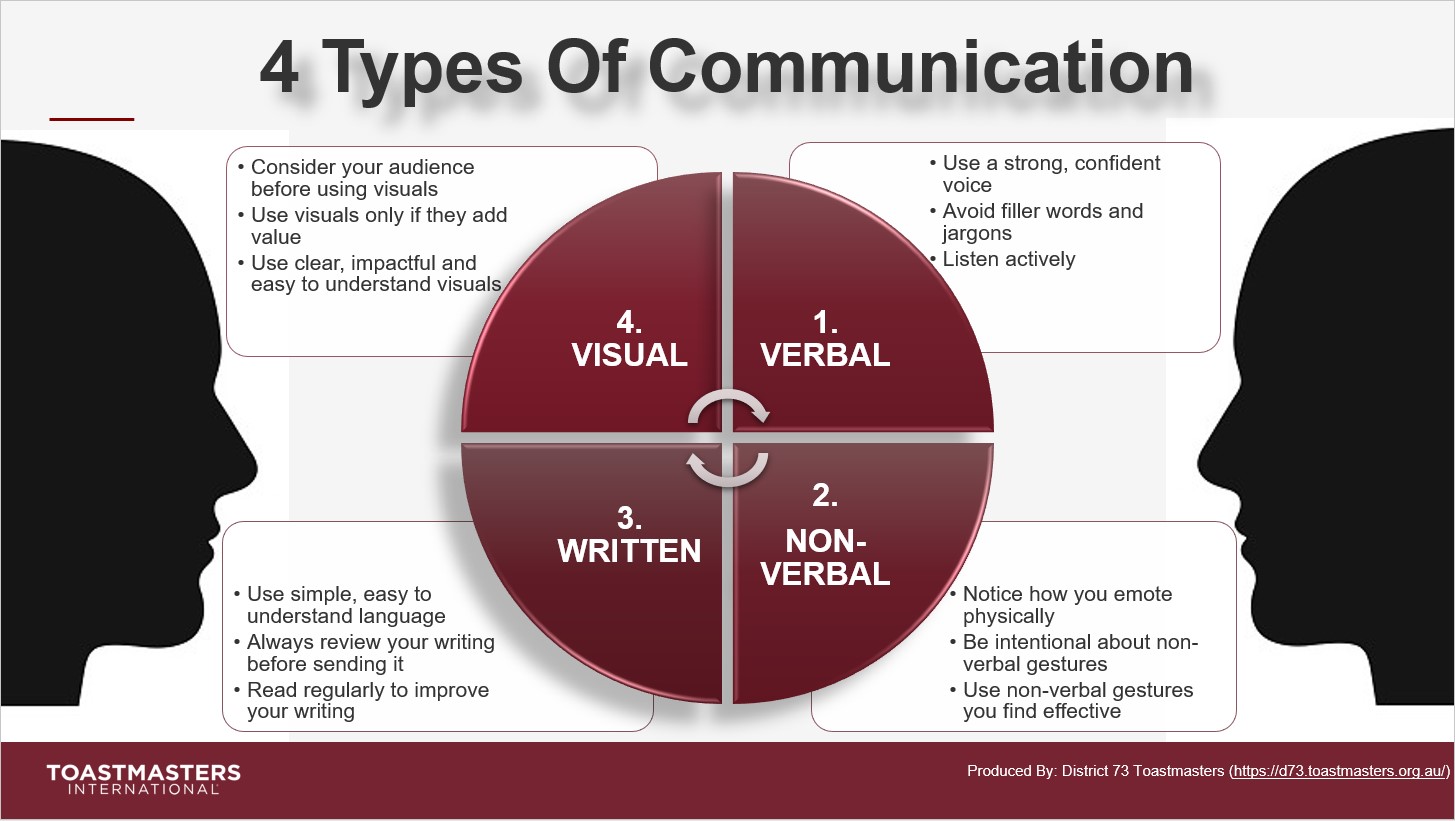
Communication can be categorized into various types based on the methods and channels used to convey information.
Here are four Common Types of Communication:
Verbal Communication: Verbal communication involves the use of spoken or written words to convey messages. It is perhaps the most common form of communication and includes face-to-face conversations, phone calls, video chats, presentations, speeches, and written documents such as emails, letters, and reports. Effective verbal communication relies on clarity, tone, and language to ensure that the intended message is understood correctly.
Nonverbal Communication: Nonverbal communication encompasses all forms of communication that do not involve words. This includes body language, facial expressions, gestures, posture, eye contact, and even silence. Nonverbal cues can convey emotions, attitudes, and intentions, often complementing or contradicting verbal messages. Understanding and interpreting nonverbal cues is crucial in effective communication.
Visual Communication: Visual communication involves the use of visual elements to convey information. This type of communication includes the use of images, charts, graphs, diagrams, videos, and other visual aids. Visual communication is often used in presentations, marketing materials, educational content, and data representation. Well-designed visuals can enhance understanding and retention of information.
Written Communication: Written communication is the use of written words to transmit messages. This includes written documents, reports, memos, emails, texts, and any form of written content. Effective written communication requires clarity, organization, and attention to grammar and formatting. It is essential for conveying detailed information, documenting decisions, and maintaining a written record of communication.
These four types of communication are interconnected, and effective communication often involves a combination of them. Choosing the appropriate type of communication depends on the context, audience, and purpose of the message you want to convey. Successful communicators are proficient in using multiple forms of communication to convey their ideas clearly and effectively.
Thank You